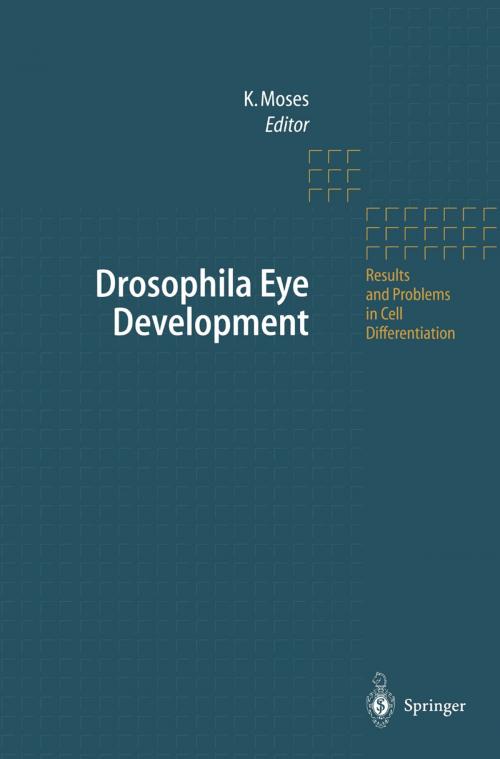| Author: | ISBN: | 9783540453987 | |
| Publisher: | Springer Berlin Heidelberg | Publication: | December 6, 2012 |
| Imprint: | Springer | Language: | English |
| Author: | |
| ISBN: | 9783540453987 |
| Publisher: | Springer Berlin Heidelberg |
| Publication: | December 6, 2012 |
| Imprint: | Springer |
| Language: | English |
1 Kevin Moses It is now 25 years since the study of the development of the compound eye in Drosophila really began with a classic paper (Ready et al. 1976). In 1864, August Weismann published a monograph on the development of Diptera and included some beautiful drawings of the developing imaginal discs (Weismann 1864). One of these is the first description of the third instar eye disc in which Weismann drew a vertical line separating a posterior domain that included a regular pattern of clustered cells from an anterior domain without such a pattern. Weismann suggested that these clusters were the precursors of the adult ommatidia and that the line marks the anterior edge of the eye. In his first suggestion he was absolutely correct - in his second he was wrong. The vertical line shown was not the anterior edge of the eye, but the anterior edge of a moving wave of patterning and cell type specification that 112 years later (1976) Ready, Hansen and Benzer would name the "morphogenetic furrow". While it is too late to hear from August Weismann, it is a particular pleasure to be able to include a chapter in this Volume from the first author of that 1976 paper: Don Ready! These past 25 years have seen an astonishing explosion in the study of the fly eye (see Fig.
1 Kevin Moses It is now 25 years since the study of the development of the compound eye in Drosophila really began with a classic paper (Ready et al. 1976). In 1864, August Weismann published a monograph on the development of Diptera and included some beautiful drawings of the developing imaginal discs (Weismann 1864). One of these is the first description of the third instar eye disc in which Weismann drew a vertical line separating a posterior domain that included a regular pattern of clustered cells from an anterior domain without such a pattern. Weismann suggested that these clusters were the precursors of the adult ommatidia and that the line marks the anterior edge of the eye. In his first suggestion he was absolutely correct - in his second he was wrong. The vertical line shown was not the anterior edge of the eye, but the anterior edge of a moving wave of patterning and cell type specification that 112 years later (1976) Ready, Hansen and Benzer would name the "morphogenetic furrow". While it is too late to hear from August Weismann, it is a particular pleasure to be able to include a chapter in this Volume from the first author of that 1976 paper: Don Ready! These past 25 years have seen an astonishing explosion in the study of the fly eye (see Fig.















